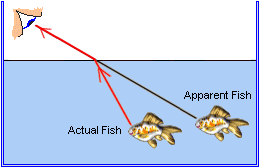First Aid – Scorpion Stings
Scorpion stings are not pleasant. Scorpions have pincers, this we know. Getting pinched by a scorpion however is not what we will be covering in this article. If you get pinched by a scorpion, you stop crying and get over it. Clean the wound up (if any) and put a bandage on it. What you need to know is how to treat the sting. By sting I mean that little sucker swung its tail forward with super speed worthy of Flash, and dug that venomous barb into your skin injecting its lovely toxin. Luckily the stinger is not usually left behind as is the case with some bees.
What’s in the Venom of a Scorpion Sting?
Scorpion venom is not a purely composed of one toxin. Scorpions deliver a protein toxin, it’s actually a mixture of different proteins. Depending on the species you might find neurotoxins, various inhibitors and other substances all of varying strengths and combinations. These different mixes likely evolved to deal with each species’ targeted prey. Not all scorpion stings are fatal, or even produce dramatic effects.
There are only about 20-45 (depending on the research source) species that can do major harm from one sting and chances are good that you won’t ever see them. This may seem like a large number compared to other venomous animal species as far as a ratio of harmless to non harmless goes, however you have to think about the fact that there are over 2000 species of scorpions currently known.
Scorpion Stings First-Aid
For any scorpion sting, if you are not allergic to the venom, the most you can do is clean the area and make it feel better. Generally you will feel a tingling sensation in the area, often spreading up the nearest appendage such as your arm (if stung on the hand). You may feel a numbness, or general burning of the area. “E-Medicine Health” does recommend the following:
-Wash the sting with soap and water and remove all jewelry because swelling of tissue may impede the circulation if it is not allowed to expand (such as a sting on a finger that has a ring on it).
-Apply cool compresses, usually 10 minutes on and ten minutes off, to the site of the sting.
-Acetaminophen (Tylenol) 1-2 tablets every 4 hours may be given to relieve pain (usually not to exceed 3g per 24 hours). Avoid aspirin and ibuprofen (Advil, Motrin) because they may contribute to other problems.
-Antibiotics are not helpful unless the sting area became secondarily infected.
-Do not cut into the wound or apply suction.
Washing the area of any wound is always important to reduce chances of infection. If you are wondering about the sucking or cutting, that is always a no-no. Even though the store will sell kits that provide a tool for the sucking of venom, it is generally not recommended. Furthermore, as soon as this process is complete I would call your local poison control center (sooner if you are experiencing ANY symptom that worries you). They will know by description the kind of scorpion found in your area and let you know how to proceed.
If you were stung before and know or recognize the species then you should already know the steps. They should also know if they should go to the hospital etc… If you live in a rural area with the nearby hospital more than 15 miles away, it’s good to have a book of local insects with pictures to identify the species. Any that are venomous should be bookmarked for quick research as well.
Always identifying a species before you stomped the thing’s lights out can be a problem…
Example of A Few Scorpions That Might Strike
The Bark Scorpion is the most venomous in North America and the United States, shown below:
Now, shown below is the Striped Bark Scorpion. Similar in appearance, but everyone who has been stung by these in my house never had to visit the hospital once. They are a bother if they venture into your house either way, since the stings from these guys are still not fun! They have broods of around 50 babies or more and smaller size doesn’t necessarily mean less venom.
My recommendation is to follow the steps outlined above and always call your local poison control center just to check-in and get information from a professional. Every time I have called in, the person who answers has been polite, considerate and very knowledgeable. Sometimes a trip to the emergency room is just common sense, especially if you are 20 miles from the hospital and travel time is lengthy.
When To Worry About Scorpion Stings
Below I have found a list of symptoms caused by the Bark Scorpion. These are serious symptoms and you or your child may need an anti-venom injection. If you or especially a child is showing these signs, get a cool compress on the sting area and drive quickly.
Children who have been stung by a bark scorpion might experience the following:
-Pain (which can be intense), numbness and tingling in the area around the sting, but generally little or no swelling
-Muscle twitching or thrashing
-Unusual head, neck and eye movements
-Drooling
-Sweating
-Restlessness and sometimes inconsolable crying
Adults are more likely to experience:
-Rapid breathing
-High blood pressure
-Increased heart rate
-Muscle twitching
-Weakness
Always use common sense. If you are in a foreign state or country, seek medical treatment quickly. If you don’t recognize the species absolutely, call poison control and explain the situation. When in doubt the emergency room is the place to go. No reason to delay if there is any uncertainty, your life is worth more than a few dollars of gas and missing American Idol’s next episode.
Thanks for reading!
-Matthew Pizgatti







1 Response
[…] First Aid – Scorpion Stings […]